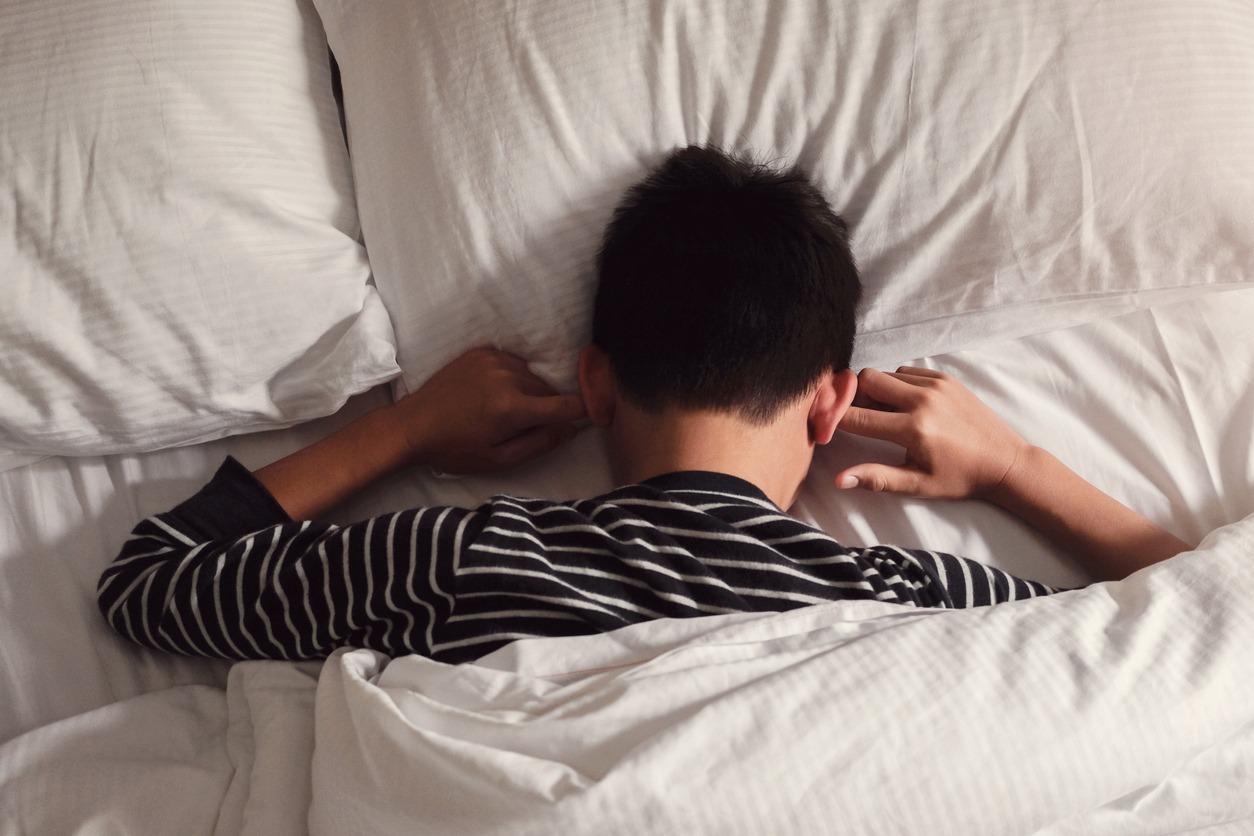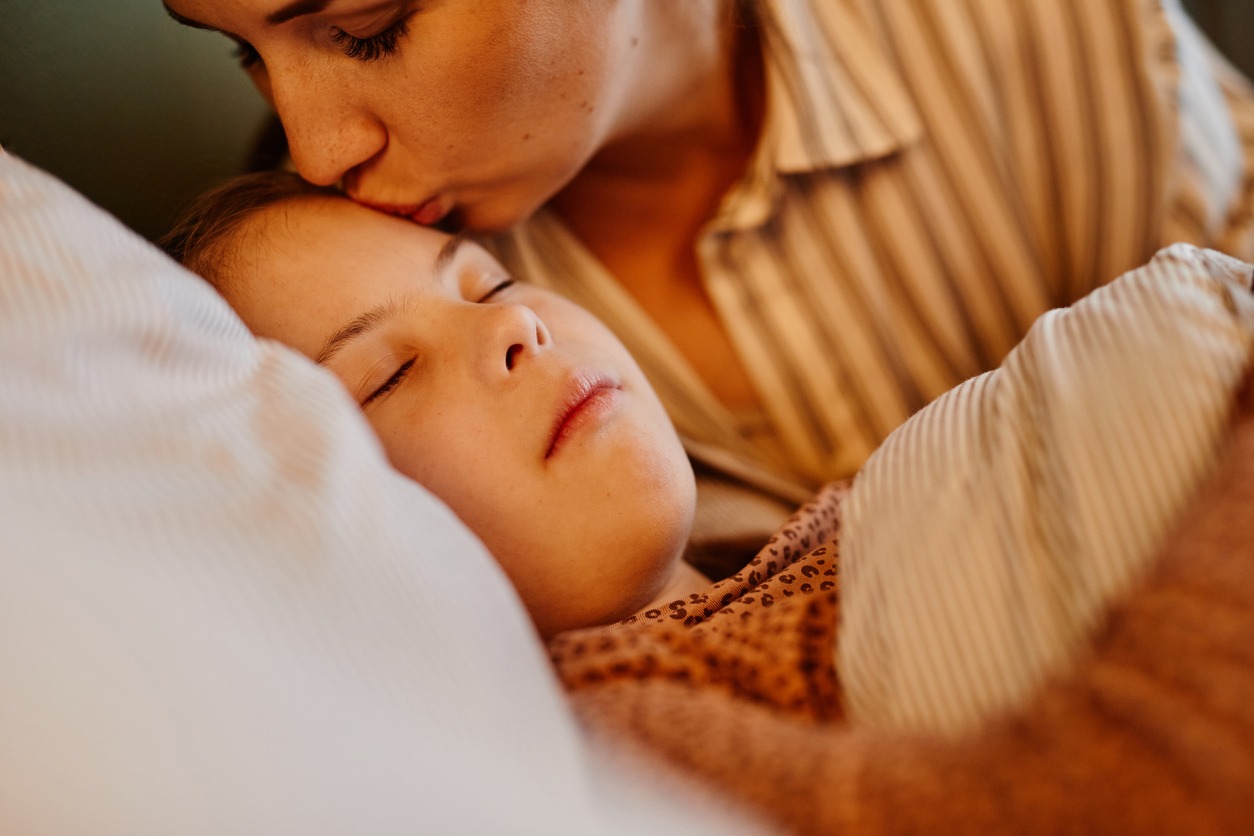Parents of a child on the autistic spectrum already have a lot on their plates, and the bedtime routine is another complication. A normal child can be challenging enough to get to sleep, but autistic children are more difficult. They have difficulty falling and staying asleep, so parents may also experience sleepless nights.
Given your child’s difficulties, how much sleep they get is important to overall wellness and health. A proper bedtime routine for autistic children can help improve their academic performance, support the development of their motor skills, and assist them in maintaining a positive outlook.
Challenges Autistic Children Face During Bedtime
It’s essential to go to sleep, stay asleep, and get quality sleep for anyone. All children need adequate rest for proper growth, learning, and development, especially autistic children. If you know that your child with autism experiences sleep issues, you’re also aware that your child’s problems can cause you to have difficulty sleeping as well.
The autistic child’s actions are the same things that keep them up at night. Among these behaviors include:
- Inattention
- Obsessive rituals
- Repetitive behaviors
- Compulsions
- Attention deficit hyperactivity disorder (ADHD)
- Physical aggression
Most autistic children suffer from poor sleep, the most prevalent of which are difficulties falling asleep, maintaining deep sleep, and early morning awakening. Other things that can cause difficulty sleeping include:
- Insomnia
- Bedtime resistance
- Daytime sleepiness
- Sleep apnea
- Parasomnias, such as nightmares, sleepwalking, restless leg syndrome, and night terrors
- Other diagnosed sleep problems
The good news is that there are ways to help so you can make an autistic child fall asleep and benefit the entire family.
Tips to Help Get Your Autistic Child to Sleep
To help parents who are having sleep difficulties with their child with autism, here are helpful tips and strategies that might help you to get and or keep your child asleep at night.
Set a bedtime routine
A regular bedtime routine that starts around the same time every night encourages good sleep patterns. People with autism need routine because it helps them function. Even if they take naps each day, an autistic child needs a predictable, expected time dedicated to sleeping.
For older children, a bedtime routine may include a quiet chat with you about their day and some alone time relaxing before nights out. Here are some things you can do so your child gets used to a bedtime routine:
Give them clear and consistent cues when it’s nearly bedtime. For example, 30 minutes before bedtime, you can start some quiet activities like drawing or reading in the family room. Then, 15 minutes before bedtime, get your child to go to the toilet and clean their teeth.
Use visual aids with pictures that show your child’s bedtime routine so your child will see and understand the steps.
If your child wakes during the night or gets upset, calmly and quietly put them back to bed. Settle them down and remind them of their sleep routine using pictures.
Until your child is good at settling to sleep, try to keep the bedtime the same, even during weekends and holidays. It’s also essential to encourage, praise, and reward your child as you make changes.
Eliminate noises in your house
Most kids can readily shut out ambient sounds, especially when they are very tired. However, it’s not the case for children with autism. Household sounds like TV, music, and even the hum of the dishwasher or vacuum cleaner can be overly stimulating and unsettling for them. As much as possible, restrict your child’s exposure to noise when their bedtime is coming.
Make their bedroom conducive to sleeping
Some sleep environments make it harder for children to go to sleep. Ensure your child’s sleeping area is quiet, dimly lit, and of the right temperature. Surround your child with things they enjoy, like a cherished stuffed animal, a nightlight, or their favorite blanket. Here are some of the things you can do to make their bedroom conducive to sleep:
- Dim the lights – It’s not uncommon for children to be afraid of the dark; a nightlight can assist with that. Look for one with a soft glow, as a too-bright light will keep them awake. Use blackout curtains or blinds to block the street lights and other exterior light sources that may enter your child’s bedroom.
- Set the right temperature – Your child may be unable to sleep if they’re too hot or too cold. However, a cooler bedroom encourages more restful sleep. Optimal bedroom temperatures rest between 65-67 degrees.
- Use comfy bedding – A good mattress makes a big difference. Make sure it’s still comfortable enough, and if it’s already several years old, you may consider replacing it. The same can be said about bedding and pillows. Children with autism tend to be picky regarding fabrics, as they can find some extremely irritating. The sheets must be made of natural fabrics and supple – not too soft nor too hard.
- Add white noise – Many children with autism also have sensory processing disorder and can be constantly bombarded with sound as they can’t tune out extraneous noise. The use of a white noise machine at bedtime can help an autistic child get to sleep by drowning out all the other noises in the room and helping them to focus on just one set of sounds which can lead to relaxation and sleep.
Try out weighted blankets
These specially weighted blankets can help Autistic children who have tactile or proprioceptive dysfunction get to sleep at night. The deep pressure provided by the weighted blanket both calms and relaxes the child’s autism and makes sleep possible. Weighted blankets can be purchased online. Here are some options you may want to consider.
Aside from weighted blankets, you may also want to try using weighted lap pads to keep your child calm and relaxed. Learn more about them by reading our post What are Weighted Lap Pads and Their Benefits?
Dress them up in comfy pajamas
Certain fabrics can be aggravating to many children with autism. Make sure that your child’s pajamas and linens are neither comfortable nor annoying for the child. Remember that seams, zippers, and buttons can also irritate. If your child is non-verbal, you may have to do some trial-and-error.
Also, putting on pajamas can be one of the bedtime routines you can incorporate so that, in your child’s mind, it’s time for sleep.
Give them a soothing bath
A soothing bath in Epsom salt given before bedtime can help relax your child with autism, making them fall asleep much easier. To give your child an Epsom salt bath, dissolve one to two cups of Epsom salt in hot water and then pour it into a tub of warm water. Once your child is in the tub, let them soak for 20 minutes. It’s unnecessary to wash the Epsom salt off after bathing unless the child feels itchy.
Teach your child to sleep alone
Most parents of children with autism fall into the habit of co-sleeping with their children to get them to sleep. While this is a precious opportunity to bond with their child and show their love, it just reinforces their perceived need to have you close to them so they can sleep. This means that you are indispensable during bedtime, even when your child wakes up in the middle of the night. And it’s not healthy for both of you.
Make your child go outside during the day
Exposure to sunlight can aid in the body’s melatonin production and help the body’s internal clock reset itself. An hour a day of exposure to morning sunlight can help those who have problems falling asleep at night.
Avoid stimulants
Avoiding caffeine and other stimulants can help some children with autism get to sleep. When we think of caffeine, most of us with children automatically think of soda (because you should not give children coffee yet). However, caffeine can also be found in chocolate, pain relievers, and medications. Make sure your child avoids these in the late afternoon or evening. In addition, avoid foods with added sugar or additives two hours prior to bedtime.
Massage
For children with autism, a fifteen-minute massage just before bedtime can help them calm and relax their bodies. This can lead to a better sleep cycle. To massage your child, apply medium pressure in smooth stroking movements to the head and neck, arms and hands, body, legs, and feet. If massage makes your child feel uncomfortable or resistant to touch, this may not be applicable.
Cut down on distractions
To help your child with autism get to sleep, cut down on distractions in their bedroom. Use heavy curtains on the windows to block out light from outside. It is better not to have a television or computer in their bedroom. If there are, make sure they are turned off. A computer’s or television’s bright screen can reset the body’s internal clock and make getting to sleep much more difficult. In addition, try to keep noise in other parts of the house down to a minimal amount while your child is trying to get to sleep.
Practice relaxation techniques
If you suspect that anxiety is the cause of your child’s sleep difficulties, you may want to incorporate relaxation activities into their bedtime routine. This may include a warm bath, deep breathing, soft music, muscle relaxation methods, and bedtime stories. It helps if you read a book to them before bed.
Older children may want to try journaling or to write down their feelings, much like how adults manage their worries.
Your child may also benefit from using twiddle muffs. To learn more about them, you may read our article about the Benefits of Twiddle Muffs to People with Dementia and Autism.
Consider melatonin therapy
If your child has difficulty sleeping at night, you might ask your pediatrician if it’s okay to give a supplement containing melatonin before bedtime. Melatonin is a hormone that is naturally released by the body to aid with sleep, and children with autism tend to have an imbalance in melatonin production and release, which leads to problems with their sleep cycle.
Melatonin therapy has been used to improve sleep in children with autism when complemented with sleep education for parents. Look for slow-release melatonin pills that are easy for kids to swallow.
Conclusion
These sleep tips are easy for parents to implement at home and require minimal equipment. However, it’s important to remember that all children respond differently and what works for one child might not work for another. Hang in there and keep trying until you come up with what works best for your child.



